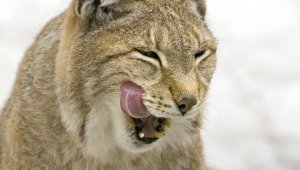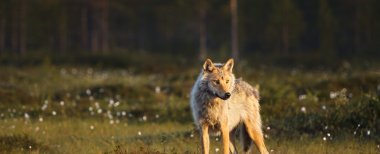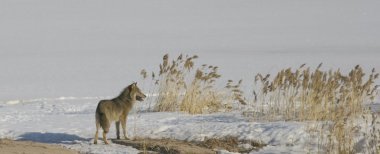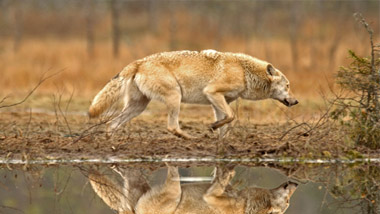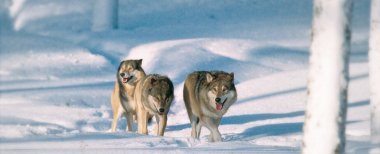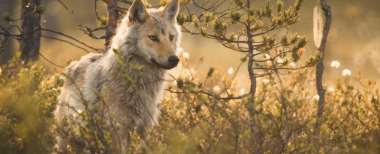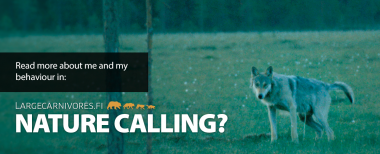Meeting a wolf
The wolf is a sizeable wild animal and large carnivore and you should remain calm and fearless when coming face to face with one. A rabid wolf or a wolf that is put on the defensive may harm a human, but this has not happened in Finland since the late 19th century.
Working group preparing the Management Plan for the Wolf Population discusses multi-species population management
Thu Feb 14 10:40:00 2019
Multi-species population management takes into account the relationships between species, such as populations of various large carnivores in relation to the populations of their prey, i.e. cervids. A multi-species approach is currently implemented in the regulation of the cervid population by factoring in the predation effects of large carnivores when planning the taxation of cervids. A multi-species approach to population management must consider regional differences in ecosystems and landscape structures. For example, the large carnivores and cervids found in Southwest Finland differ greatly from those found in Eastern Finland in terms of both species distribution and population size.
In the working group's view, a multi-species approach to population management is an important aspect of large carnivore and cervid population management that requires further development. The working group also discussed the fact that in addition to considering the interactions between different game species, multi-species population management must factor in the positive and negative effects of large carnivores and cervids on humans and human activities, for instance. Negative effects include the damage caused by large carnivores and cervids, while an example of a positive effect is the benefits of the species for the wilderness economy.
More research data needed
Multi-species population management involves taking into account several factors and their interdependencies. In the working group’s view, resources should be allocated for research on multi-species population management to support decision-making, for example when planning taxation of the moose population in moose economy areas. This would make it possible to develop population management in a way that takes better account of the special features of different regions.
Studies have found that wolves, for instance, have a wide range of effects on the ecosystem. The effects can be divided into direct effects of wolf predation (such as on the number of cervids) and indirect effects caused by the presence of wolves in an area. The latter category includes changes in the behaviour of other species and effects on the environment and nutrient network. By increasing awareness of the role of the wolf as a part of the ecosystem and biodiversity, we can also work to promote acceptance of the wolf.
The working group also discussed the effects of the wolf and other large carnivores on the protected forest reindeer population. Studies of the forest reindeer population in Kainuu have found that predation by large carnivores and the wolf in particular has a reducing effect on the population. This may be due in part to the fact that as a species, the Finnish forest reindeer differs from the moose and white-tailed deer in terms of its living habits and breeding patterns, for example.
The working group was of the view that when dealing with questions concerning the Finnish forest reindeer, it is important to look for solutions and set targets that help to secure the vitality of both the wolf and forest reindeer populations. More information on the Finnish forest reindeer population is available on the Natural Resources Institute Finland website.
Read more: The Swedish Environmental Protection Agency recently released a report (in Swedish) examining the effects of large carnivores on other game species.
Report a sighting
A large carnivore sighting can consist of seeing the animal itself, or spotting the tracks, droppings, carcasses, claw marks or other signs left behind by the carnivore somewhere in the wilds. By reporting your sighting you are taking part in game animal research. Every year tens of thousands of sig...
Damage prevention
Occasionally large carnivores cause damages to domestic animals. Livestock and hunting dogs are the most common targets. However, a significant portion of large carnivore damages may be avoided with the right kind of preventive measures.
Large carnivores in populated areas & road accidents
A large carnivore that causes damage, repeatedly acts in a problematic manner or ventures into a populated area must always be reported to the emergency exchange (tel: 112). The primary aim is to scare the predator away from coming too close to populated areas. The animal is only put down if it is b...
